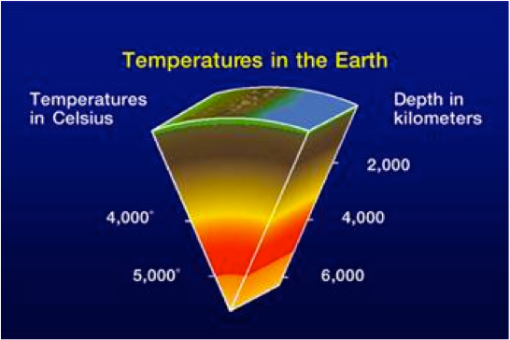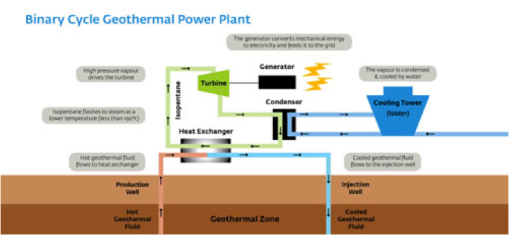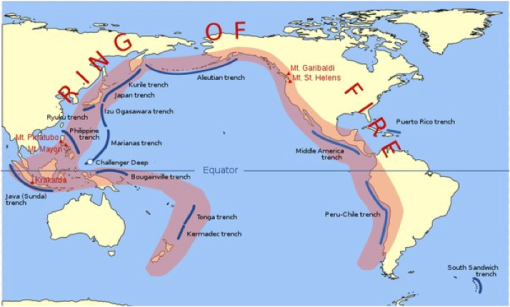
For today’s post I am very excited to introduce my friend Peter Buchanan as my first guest writer for ReachFWD.
Peter is currently studying Petroleum Engineering at the University of Alberta and he hopes to study geothermal electricity at grad school. He was explaining the concept to me and it sounded so interesting that I asked him to write a brief explanation for my readers on ReachFWD.
************************
When we think of alternative sources of energy, renewable resources that can reduce our dependency on fossil fuels to meet our energy needs, often the most vivid pictures that come to mind are wind and solar power. Evidently, this is because the sun and the wind are so ubiquitous in our daily lives. We can feel their energy so it is only natural to notice them. This is probably why geothermal power, another renewable source of energy has been largely overlooked until recently.
Geothermal power comes from energy generated by heat in the earth. The material that makes up our planet gets hotter and hotter as is gets closer and closer to the core of our planet. This energy can be seen on the surface in the form of hot springs, geysers and volcanoes. There is an essentially infinite amount of energy beneath our feet, waiting to be utilized.
(Diagram from www.geo-energy.org/basics.aspx)
Geothermal Energy is not new; the first Geothermal Power Station was build in 1911 in Larderello, Italy[1]. Since then, it has become a common source of energy in places like New Zealand, Iceland, The Phillipines and the Geysers in California. Typically it works like this: Two wells are drilled into a geothermal reservoir (rock hot enough to transfer sufficient energy to water). The geothermal reservoir may contain water or steam in network of pores and fractures that make up the rock or it might be dry. Hot water is extracted from the wells and its energy is used to drive a turbine which generates electrical power. The cooled water is then re-injected down the other well where it reheats and continues in the loop.
While there are various types of geothermal plants, the three most prominent types are: Flash steam, Dry steam and Binary Cycle.
Flash steam plants work when high pressure, high temperature water coming up the producer well are directed in to a large vessel. Because of the large pressure difference the water flashes into steam which is used to power the turbine.
Dry steam plants are used when the wells produce only steam. This can be the case in very high temperature reservoirs. The steam from the reservoir directly turns the turbine and is then condensed into water and re-injected into the ground.
Binary Cycle plants use a working fluid (commonly iso-pentane) with a lower boiling temperature than water to turn the turbine[2]. Hot water from the reservoir heats the fluid in a heat exchanger. The fluid then boils to turn the turbine, while the water is re-injected in a closed loop. Binary Cycle plants allow for lower temperature reservoirs to be used.
(Diagram from: http://www.nevadageothermal.com/s/HowGeoWorks.asp)
If geothermal power is so clean, efficient and abundant, why isn’t it being used for all of our electricity needs across the planet, you ask? Until recently, geothermal power was not viable from and economic or technological point of view in most areas of the world. In places like Iceland, New Zealand and the Philippines where hot reservoir rock can be found close to the surface it was used but in many areas of the world the resource would be too deep to drill for economically if even possible.
(Diagram from: http://www.cangea.ca/what-is-geothermal/)
Fortunately, with today’s advancements in technology such as binary cycle plants and enhanced geothermal systems (EGS; where rock is artificially fractures to allow for more permeability in the rocks and more flow/heat transfer) many new geothermal resources may be unlocked in the near future. Geothermal power is not likely to ever completely replace fossil fuels, however combined with other renewable sources of energy it has the potential to contribute to a much larger percentage of the world’s energy consumption.
Pros of Geothermal Power:
- Clean and renewable with little or no emissions.
- Reliable. It doesn’t depend on the weather to produce electricity, so it is always on.
- Many of the engineering concepts are very similar to Oil & Gas, so we have a head start on the learning curve.
- Can already compete economically in some regions and the list of regions is growing.
Cons of Geothermal Power:
- Requires a large initial capital investment (like all power plants) which can take time to recover the costs.
- Not economical in many regions.
- Reservoirs can be depleted of heat locally, but will regenerate the heat over time.
- Not enough awareness!
References:
- Larderello Worlds First Geothermal Power Station, Renewable Energy UK, http://www.reuk.co.uk/Larderello-Worlds-First-Geothermal-Power-Station.htm
- How Geothermal Works, Nevada Geothermal Power, http://www.nevadageothermal.com/s/HowGeoWorks.asp
- What is Geothermal, Canadian Geothermal Energy Association, http://www.cangea.ca/what-is-geothermal/
- Basics, Geothermal Energy Association, http://www.geo-energy.org/basics.aspx



[…] Geothermal Power: An underrated alternative source of energy … […]
[…] Geothermal Power: An underrated alternative source of energy « Reach Forward […]
Another interesting concept is that of using heat pumps, which is sometimes also called geothermal power (mistakenly, I think, but I’m not very well read in this area – Peter will be able to clarify). Anyway, the basic concept seems to be the use of a large thermal mass such as a lake or rock and then to use the heat differential (different gradient directions in winter and summer but there’s a gradient nonetheless) to generate energy and heat transfer.
There is some other interesting stuff that I have lost for the moment, showing that a much better way to capture solar energy is to use heat gradients within the ocean continental shelf. Kinda like a large scale heat pump with the same principle as the above.
The biggest problem at the moment appears to be engineering, in a cost effective fashion, turbine bearings that can take the pressure and thermal load. But if this can be fixed, then the equations determining the rate of energy transfer show this to be a far more effective and efficient means of gathering solar energy.
Basically, you are using the sun’s effect on a large collector area (ocean) over a steady period of time then using more efficient heat/energy transfer mechanisms to capture that heat. Apparently, for efficiency, it beats solar panel and windmill energy transfer efficiency by about 40%. (Wish I could find the link)
please! insert more pictures